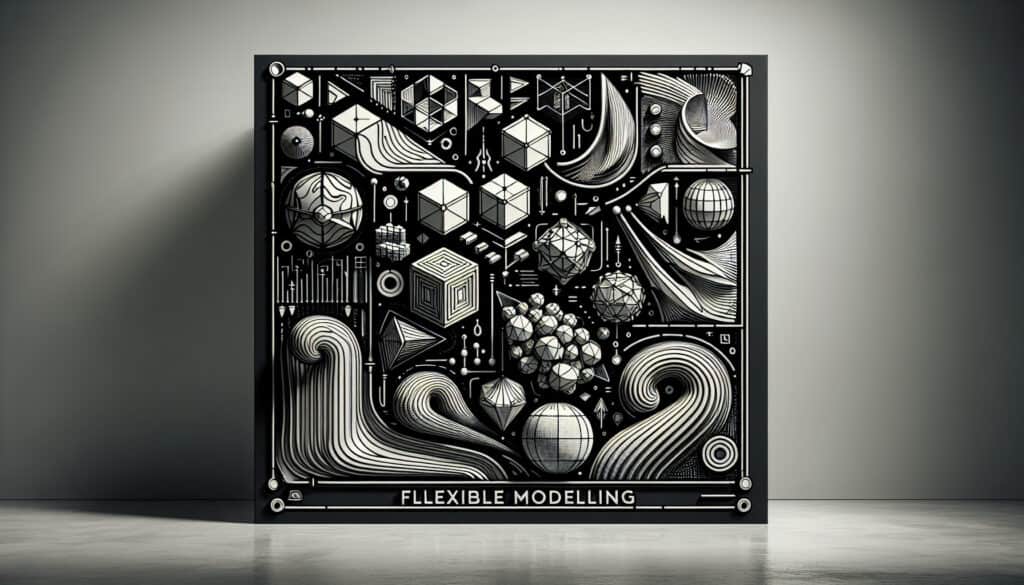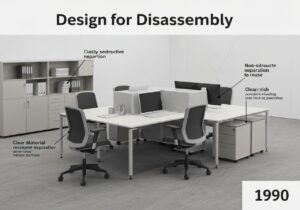Creare e modificare modelli 3D con una combinazione di tecniche di modellazione parametrica e diretta.
- Metodologie: Ingegneria, Qualità
Modellazione flessibile

Modellazione flessibile
- Metodologia agile, Gestione del cambiamento, Progettazione assistita da computer (CAD), Progettazione per la produzione additiva (DfAM), Ottimizzazione del design, Processo di progettazione, Sviluppo del prodotto, Prototipazione, Prototipazione rapida
Obiettivo:
Come si usa:
- A CAD approccio di modellazione che consente ai progettisti di modificare facilmente la geometria senza essere vincolati dall'intento progettuale originale. È utile per apportare modifiche alla progettazione in fase avanzata e per lavorare con i dati importati.
Professionisti
- Offre flessibilità nel processo di progettazione; consente di apportare modifiche rapide al progetto.
Contro
- Può essere meno precisa della modellazione parametrica; può non essere adatta a tutti i tipi di progettazione.
Categorie:
- Ingegneria, Progettazione del prodotto
Ideale per:
- Modifiche di progettazione in fase avanzata a un modello 3D o lavoro con dati CAD importati.
La modellazione flessibile è particolarmente vantaggiosa nei settori che richiedono iterazioni rapide e reattività ai feedback dei clienti, come l'elettronica di consumo, il settore automobilistico e quello aerospaziale. In questi ambienti, ingegneri e progettisti si trovano spesso a dover apportare modifiche in fase avanzata, in seguito a richieste del mercato o a valutazioni del progetto, che rendono i metodi CAD tradizionali ingombranti. Utilizzando questo approccio, i team possono accettare le modifiche al progetto senza perdere l'intento geometrico originale, il che è particolarmente vantaggioso quando si tratta di dati importati da vari programmi CAD. I partecipanti a questa metodologia spesso includono ingegneri meccanici, designer industriali e product manager che collaborano in team interfunzionali per garantire che il progetto rimanga allineato alle funzionalità pratiche e alle considerazioni estetiche. Questa metodologia viene tipicamente applicata nella fase di prototipazione o durante il recensioni di designconsentendo alle parti interessate di visualizzare e valutare le modifiche in modo efficiente prima della produzione finale. L'utilizzo della modellazione flessibile non solo eleva le capacità di progettazione, ma riduce anche in modo significativo il tempo necessario per la prototipazione, favorendo un time-to-market più rapido e migliorando la qualità del prodotto e la soddisfazione del cliente. Esempi di applicazioni si trovano nei prodotti di consumo personalizzabili, dove le rapide modifiche al progetto portano a nuove funzionalità basate sul feedback degli utenti o sulle tendenze della moda in rapida evoluzione.
Fasi chiave di questa metodologia
- Importazione di dati CAD o utilizzo di modelli esistenti.
- Identificare le caratteristiche chiave per la modifica.
- Utilizzare gli strumenti di modellazione basati sulla storia per i parametri modificabili.
- Applicare tecniche di modellazione diretta per la modifica della geometria.
- Utilizzare la soppressione o l'eliminazione delle caratteristiche per rimuovere i vincoli.
- Riapplicare i vincoli o applicarne di nuovi, se necessario.
- Valutare le modifiche attraverso simulazioni o ispezioni visive.
- Raffinare iterativamente la geometria in base al feedback.
- Finalizzare le modifiche e prepararle per i processi a valle.
Suggerimenti per i professionisti
- Implementate un solido sistema di gestione dei livelli nel vostro Software CAD per isolare e controllare le modifiche in modo efficiente.
- Utilizzate gli strumenti di configurazione e le tabelle di progettazione per variare i parametri, consentendo iterazioni più rapide in base ai requisiti del progetto.
- Incorporare pratiche di controllo delle versioni per i dati importati, per tenere traccia delle modifiche e mantenere l'integrità dell'intento progettuale originale.
Leggere e confrontare diverse metodologie, raccomandiamo il
> Ampio archivio di metodologie <
insieme ad altre 400 metodologie.
I vostri commenti su questa metodologia o ulteriori informazioni sono benvenuti su sezione commenti qui sotto ↓ , così come tutte le idee o i link relativi all'ingegneria.
Contesto storico
1980
1980
1986
1987
1990
1990
1990
1980
1980
1986
1986
1987-03
1990
1990
1992
(se la data non è nota o non è rilevante, ad esempio "meccanica dei fluidi", viene fornita una stima approssimativa della sua notevole comparsa)















Post correlati
Programma di produzione principale (MPS)
Personalizzazione di massa
Imbuto di marketing
Audit di marketing
Indice MAPO (Movimento e assistenza dei pazienti in ospedale)
Pianificazione delle risorse di produzione (MRP II)